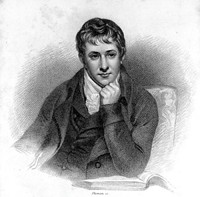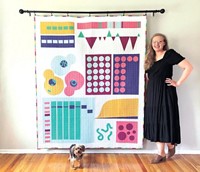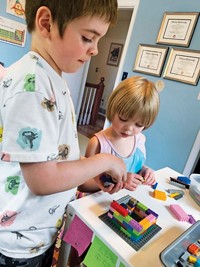Advertisement
Grab your lab coat. Let's get started
Welcome!
Welcome!
Create an account below to get 6 C&EN articles per month, receive newsletters and more - all free.
It seems this is your first time logging in online. Please enter the following information to continue.
As an ACS member you automatically get access to this site. All we need is few more details to create your reading experience.
Not you? Sign in with a different account.
Not you? Sign in with a different account.
ERROR 1
ERROR 1
ERROR 2
ERROR 2
ERROR 2
ERROR 2
ERROR 2
Password and Confirm password must match.
If you have an ACS member number, please enter it here so we can link this account to your membership. (optional)
ERROR 2
ACS values your privacy. By submitting your information, you are gaining access to C&EN and subscribing to our weekly newsletter. We use the information you provide to make your reading experience better, and we will never sell your data to third party members.
Education
Newscripts
Playing With Proteins, Gummy Self-Portraits
by Bethany Halford
April 8, 2013
| A version of this story appeared in
Volume 91, Issue 14

Oh what a tangled web we weave, when proteins we practice to perceive. Ever try to build a protein using a classic chemistry ball-and-stick model set? It can be a mess. And even though computer programs allow scientists to build and manipulate protein structures in silico, the simulations lack the tangible benefits of being, well, tangible.
Now, thanks to a collaboration between a chemistry professor and a sculptor, anyone can build models of α-helices, β-sheets, and even whole proteins with the Tangle Proteins Building Set. The kit costs about $35 (from online retailer ThinkGeek) and comes with multicolored plastic pieces that fit together to make all manner of protein models. An instruction booklet guides users through the construction of three different proteins: streptococcal protein G, ubiquitin, and ω-conotoxin MVIIA.
The story of the set’s invention starts 10 years ago on a rainy day in Aberdeen, Scotland. There are many rainy days in Scotland, but Marcel Jaspars, a chemistry professor at the University of Aberdeen, remembers this one because it was his birthday. His wife, Sally, gave him a small Tangle toy—one of those plastic stress-relief toys that twists and turns into an infinite number of shapes.
“My wife is my greatest scientific asset in terms of finding interesting things,” Jaspars tells Newscripts. He couldn’t help but notice that the Tangle toy was an excellent prop for explaining the shape and movement of proteins. “Protein chemistry is so difficult to understand, but if you strip it down to the backbone, it becomes springs and hairpins,” he explains.
That summer, Jaspars took a family vacation to San Francisco, home of Tangle Creations’ headquarters. He got in touch with Richard X. Zawitz, the sculptor behind Tangle toys, and pitched the idea of turning the plastic jumbles into a protein model set. He left “with a bag full of Tangle toys and a head full of ideas.”
Later that year, Jaspars had the misfortune of having a projector go kaput while he was presenting at an international conference. Still, he was able to give his talk and explain the science, with a massive Tangle toy he had assembled.
After much hard work by Jaspars and Zawitz, the protein building set was introduced to consumers just a few weeks ago. Jaspars hopes the new kit will find use with educators and students. It’s already earned him extra points with his kids.
Another story about biological models caught the attention of the Newscripts gang recently. But rather than scaled-up versions of small things, these are scaled-down models of big things. Plus, they’re edible.

Tokyo’s FabCafe offered nine of its male patrons the opportunity to make gummy replicas of themselves for about $65 per person. The special workshop was held in honor of White Day, a Japanese holiday in which men give their sweethearts sweet treats.
White Day falls exactly one month after Valentine’s Day and represents a day of turnabout: In Japan, the Valentine’s tradition is for ladies to give their special fellas chocolates. To mark that holiday, FabCafe let female patrons make chocolate models of their faces. Both events made use of a three-dimensional scanner to capture the subjects’ likenesses, followed by 3-D printing of molds for the chocolate and gummy candy.
FabCafe bills itself as a coffee shop where people are empowered to make fabulous things. For example, after they’ve ordered a latte, patrons can rent time on a laser cutter. To keep a steady hand, creative types might want to take it easy on the espresso.
Bethany Halford wrote this week’s column. Please send comments and suggestions to newscripts@acs.org.





Join the conversation
Contact the reporter
Submit a Letter to the Editor for publication
Engage with us on Twitter